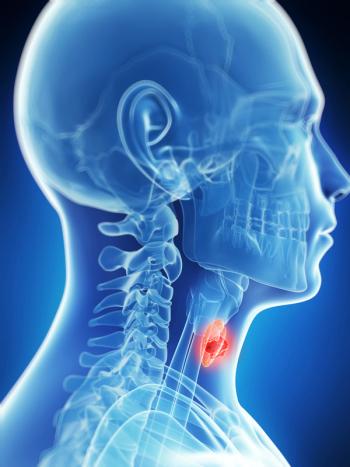
Oncology NEWS International
- Oncology NEWS International Vol 6 No 10
- Volume 6
- Issue 10
Symptom-Based Staging of Head & Neck Cancer
SAN FRANCISCO-Not all clinicians are satisfied with the current TNM staging system for head and neck cancers. The problem is that the TNM system is based on a morphologic description of the tumor.
SAN FRANCISCONot all clinicians are satisfied with the current TNM staging system for head and neck cancers. The problem is that the TNM system is based on a morphologic description of the tumor.
TNM completely ignores the clinical condition of the patient, which may have more to do with actual clinical outcome and survival than the TNM stage, Frederic Pugliano, MD, said at the 101st Annual Meeting of the American Academy of Otolaryngology-Head and Neck Surgery.
Clinicians dealing with lymphomas and other cancers have already developed their own symptom-based staging systems, but no such system has existed for head and neck cancers.
Dr. Pugliano, a private clinician and fellow in the Clinical Outcomes Research Office at Washington University Medical Center (WUMC), St. Louis, led a team that evaluated disease-related symptoms as a biologic index in order to improve survival estimates for head and neck cancer patients. Symptoms reflect the biological impact of the malignancy process, Dr. Pugliano said .
In order to develop their symptom-based staging system, Dr. Puglianos group reviewed the medical records of 1,010 patients who received their initial treatment for head and neck cancer at WUMC between 1980 and 1991.
A total of 49 symptom variables were screened by univariate analysis, and 23 of these variables were entered into a Cox proportional hazards model based on survival duration.
Not surprisingly, patient age had a significant correlation with survival. Median survival for patients 55 years or younger was 70 months, while patients who were 64 or older survived only 52 months.
Alcohol use and comorbidities were other important correlates, as was TNM stage. Stage I patients survived 89 months. Stage IV patients survived just 41 months, less than half as long.
But the most significant independent predictors of survival duration turned out to be dysphagia (risk ratio, 1.29); otalgia (risk ratio, 1.42); neck lump (risk ratio, 1.28); and weight loss (risk ratio, 1.52). Weight loss, Dr. Pugliano said, emerged as the single most significant variable in the survival equation.
The team combined these four most significant symptoms to create a composite symptom-severity staging system based on median survival times (see table).
Stage none was defined as exhibiting none of the four symptoms (median survival, 74 months); stage mild, one to two symptoms (56 months); stage moderate, two to three symptoms (40 months); and stage severe, three to four symptoms (31 months).
The overall five-year survival rate for the study group was 46%. Staged by symptom severity, median five-year survival rates were as follows: Stage none, 58%; stage mild, 42%; stage moderate, 25%; and stage severe, 16%.
The new system compared favorably to five-year survival rates by TNM stage, Dr. Pugliano said: Stage I, 72%; stage II, 54%; stage III, 35%; and stage IV, 30%.
When symptom-severity stage and TNM stage were compared in a proportional-hazards model along with comor-bidity, he said, all three variables were independently predictive of survival duration. The calculated risk ratios were: TNM, 1.295; symptom severity, 1.311; and comorbidity, 2.259.
Important Prognostic Information
Appropriately defined patient symptoms provide important prognostic information, Dr. Pugliano concluded. And because symptom staging is entirely independent of TNM stage, physical symptoms provide a useful index of the biologic behavior of head and neck cancer.
Articles in this issue
about 28 years ago
Toremifene, Tamoxifen Equivalent in Advanced Breast Cancerabout 28 years ago
Fluorescence ‘LIFE’ Images Spot Occult Lung Cancer Lesionsabout 28 years ago
The Issue That Won’t Go Away: Screening Mammographyabout 28 years ago
News in Brief...about 28 years ago
Concurrent Better Than Sequential Chemo-RT in NSCLCabout 28 years ago
Consumer Version of Merck & Co’s Famous Manual Is Availableabout 28 years ago
A Talk With Dr. Richard Klausner, Head of the NCIabout 28 years ago
Age Is a Factor in Survival of SqCC of the Head and Neckabout 28 years ago
President Asks Congress to Toughen Tobacco SettlementNewsletter
Stay up to date on recent advances in the multidisciplinary approach to cancer.



















































































